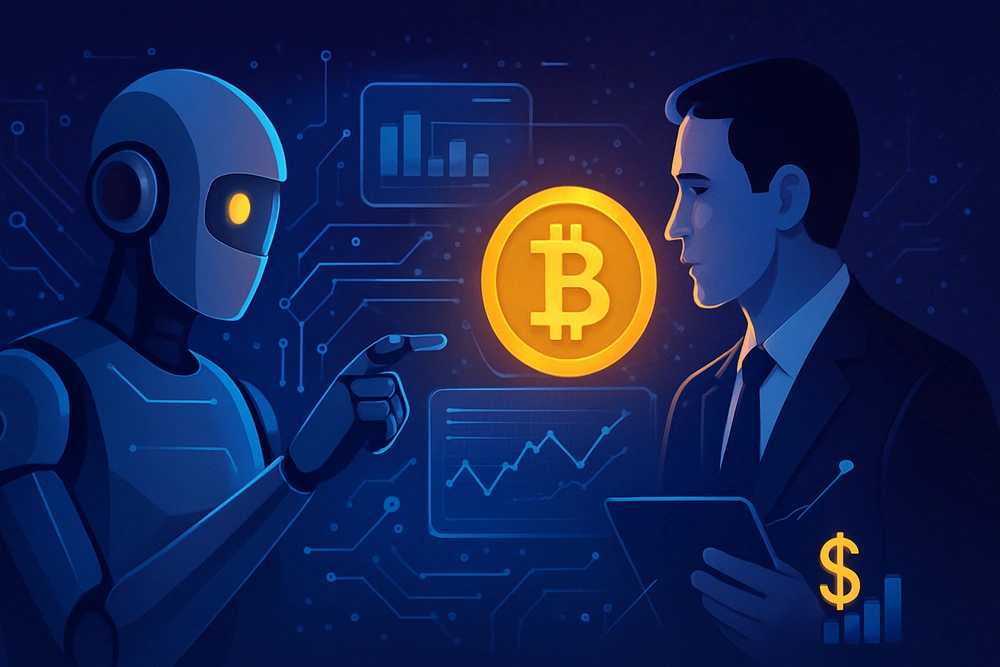The cryptocurrency market has never slept — but today, it barely even blinks. Behind every price surge, sudden dip, and lightning-fast trade lies a web of sophisticated algorithms designed to keep digital assets moving. These systems operate at speeds no human trader could match, forming the invisible framework that drives liquidity, influences volatility, and shapes the global crypto economy.
While the public often focuses on Bitcoin’s swings or trending meme tokens, the true action takes place behind the scenes — inside automated trading bots, liquidity-driven market makers, and predictive models that constantly adjust to global market signals.
Below is a clear look into how these algorithms work, why they matter, and what they mean for everyday traders.
The Rise of Algorithmic Trading in Crypto
Traditional financial markets have relied on automated trading for more than two decades. Crypto, however, accelerated this trend. With exchanges operating 24/7 and prices reacting instantly to global events, algorithms became not just beneficial but essential.
Today, a significant portion of crypto trades are executed by automated systems that:
- Analyze market conditions in real time
- Execute trades within milliseconds
- React instantly to price changes
- Manage risk using set parameters
For the average trader, this means the market is constantly shaped by tools that never tire, pause, or hesitate.
Also read: Smart Ways to Earn Money Through Real-World Asset (RWA) Tokenization in Real Estate and Gold
How Trading Bots Move the Market
Not all trading bots are created equal. Some are built for speed. Some for accuracy. Others for simply securing small profits repeatedly throughout the day.
1. High-Frequency Trading (HFT) Bots
These bots operate at extreme speeds, placing thousands of micro-orders within seconds. Even tiny price differences can be profitable when executed at scale. HFT bots help increase liquidity — but they also contribute to rapid price swings during high-volatility periods.
2. Arbitrage Bots
Crypto prices vary from platform to platform. Arbitrage bots scan multiple exchanges simultaneously, buying lower on one and selling higher on another.
This automated balancing helps keep prices consistent across the global market.
3. Trend-Following Bots
These systems monitor momentum indicators and jump into trades only when a clear trend forms. Their goal is simple: ride waves, avoid turbulence. As more traders deploy these bots, trends can strengthen quickly.
Market Makers: The Quiet Architects of Liquidity
While bots automate trading strategies, market makers ensure the market actually functions smoothly.
Market makers place continuous buy and sell orders, creating a stable environment for traders to enter and exit positions. They play a crucial role in reducing price slippage and increasing liquidity — especially for newer or lower-volume cryptocurrencies.
Also read: Top 10 Blockchain Trends to Watch in 2026 and Beyond
How Market Makers Influence Prices
Market makers help shape price movement by:
- Maintaining tight spreads between buy and sell prices
- Adjusting order books during volatile conditions
- Supporting consistent trading activity
- Stabilizing markets during large inflows or outflows
They don’t set prices — the market does — but they influence the “smoothness” of price movement, preventing extreme jumps that could disrupt trading.
Behind the Curtain: The Algorithms They Use
Most crypto-focused market makers rely on a mixture of automated strategies, including:
1. Inventory-Based Models
These algorithms maintain a balanced supply of a token, adjusting prices to avoid holding too much or too little of any given asset.
2. Dynamic Spread Adjustment
When volatility increases, spreads widen.
When markets calm, spreads tighten.
This model ensures market makers stay profitable while providing liquidity.
3. Volume-Responsive Pricing
Algorithms react to sudden spikes in buy or sell activity. If buyers rush in, the algorithm adjusts upward. If sellers dominate, prices are stabilized downward.
Why These Algorithms Matter to Everyday Traders
Even if you never use a trading bot or interact with a market maker directly, these systems affect nearly every trade you make.
1. Prices React Faster
Algorithms detect patterns sooner than manual traders, leading to quicker market movements.
2. Liquidity Is More Consistent
Market makers help reduce slippage — meaning you usually get prices closer to what you expect.
3. Trends Become Stronger
When many bots follow the same indicators, trends can intensify quickly.
4. Volatility Can Spike Suddenly
During major news events, automated systems can trigger rapid buying or selling.
Understanding these dynamics can make you a more informed and strategic trader.
What the Future Holds for Algorithmic Crypto Trading
As digital assets mature, algorithmic trading is expected to grow even more advanced. Future developments may include:
- AI-enhanced predictive models
- Automated risk-adjustment tools
- More sophisticated market-making infrastructure
- Transparent algorithmic governance
- Improved protection against manipulative activity
What’s clear is this: algorithms will continue shaping the crypto ecosystem, but their evolution will also bring clearer rules, better security, and greater trading efficiency.
FAQ
1. What is algorithmic trading in crypto?
Algorithmic trading uses automated systems to analyze markets and execute trades based on predefined rules, increasing speed and efficiency in the crypto market.
2. What do crypto trading bots do?
Trading bots monitor price charts, indicators, and market conditions to place trades automatically, often with the goal of identifying trends, reducing risk, or making small profits repeatedly.
3. How do market makers affect crypto prices?
Market makers support liquidity by placing both buy and sell orders. They don’t set prices but help reduce slippage, keep order books active, and stabilize markets during volatility.
4. Are crypto trading bots legal?
Yes. Trading bots are widely used across major crypto exchanges, provided they operate within platform rules and applicable regulations.
5. Do bots make crypto more volatile?
Bots can intensify price movements during major news events or sudden market shifts, but they also provide liquidity that helps stabilize normal trading conditions.
6. Should beginners use trading bots?
Beginners can use bots, but should start with basic, reputable tools and understand the risks. Market conditions, bot settings, and strategy accuracy all impact results.
